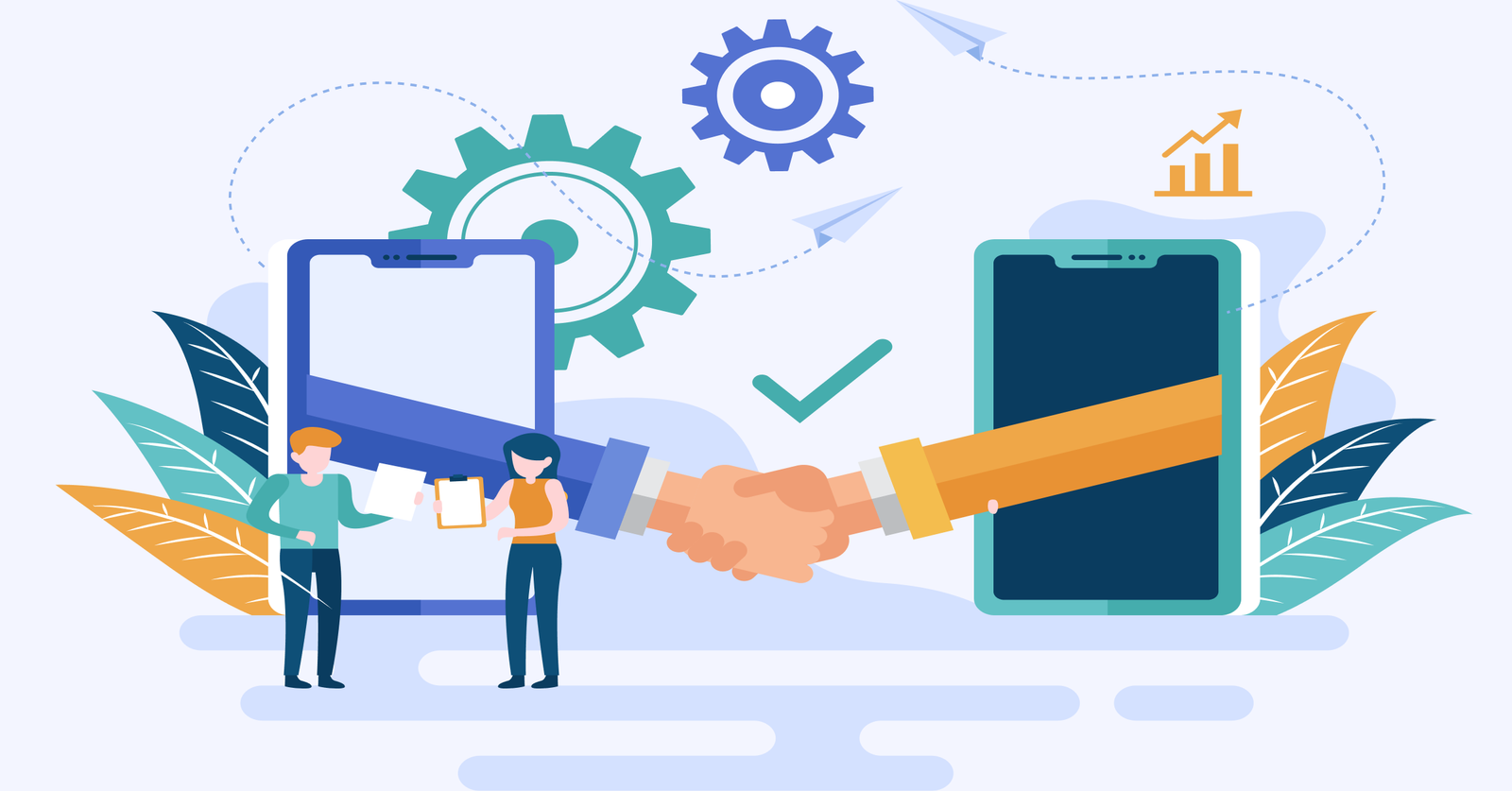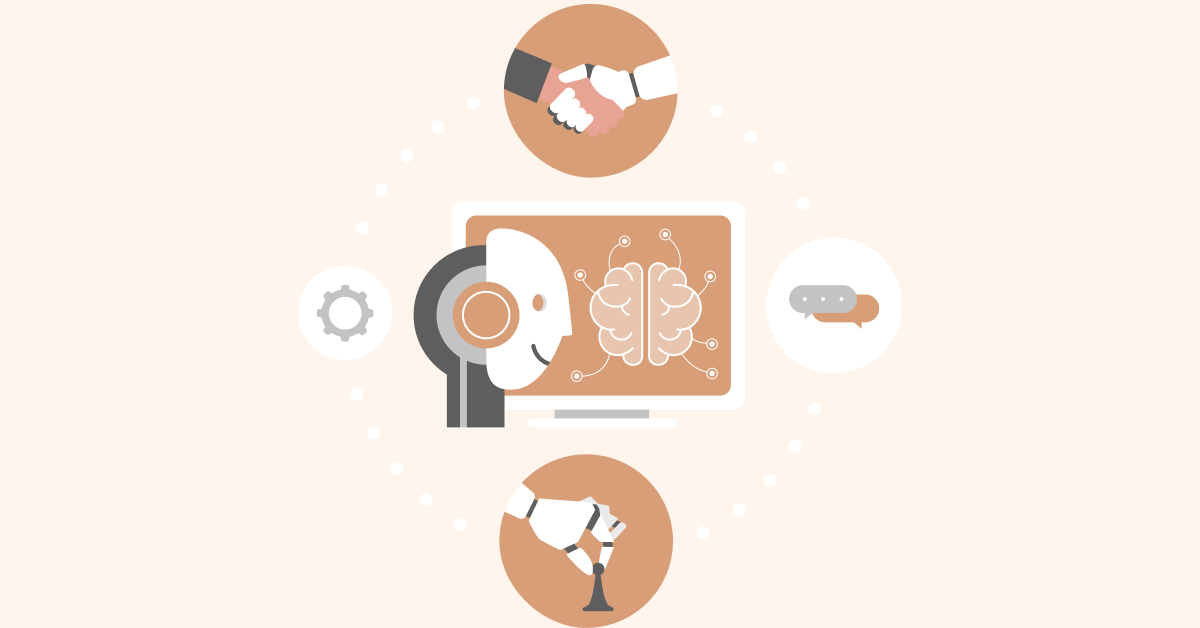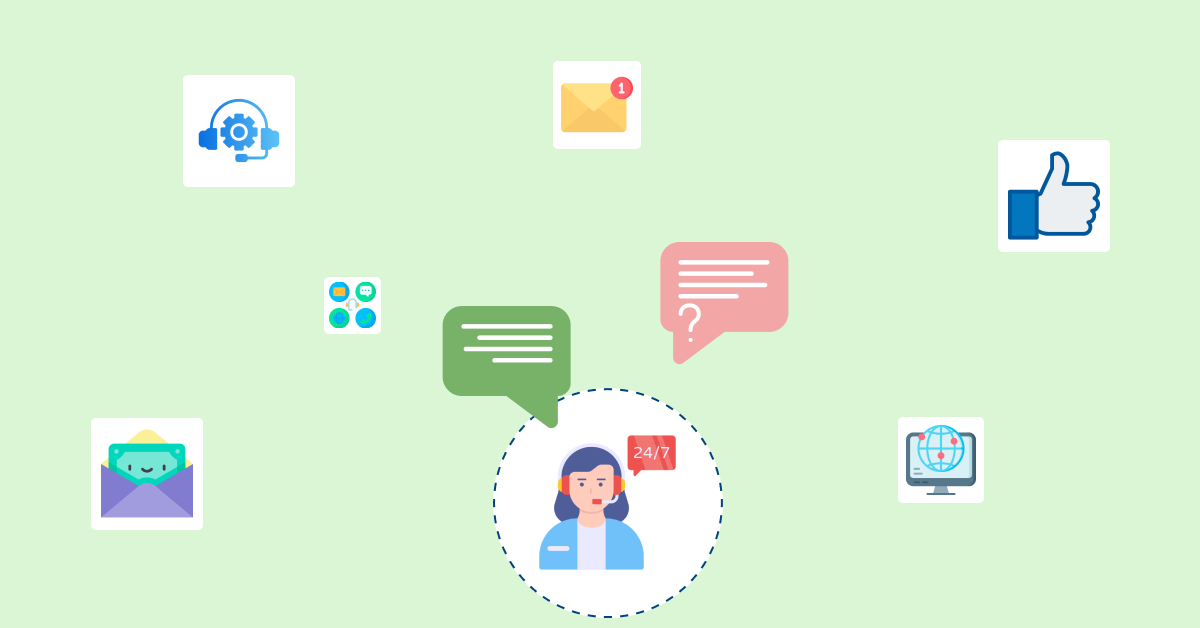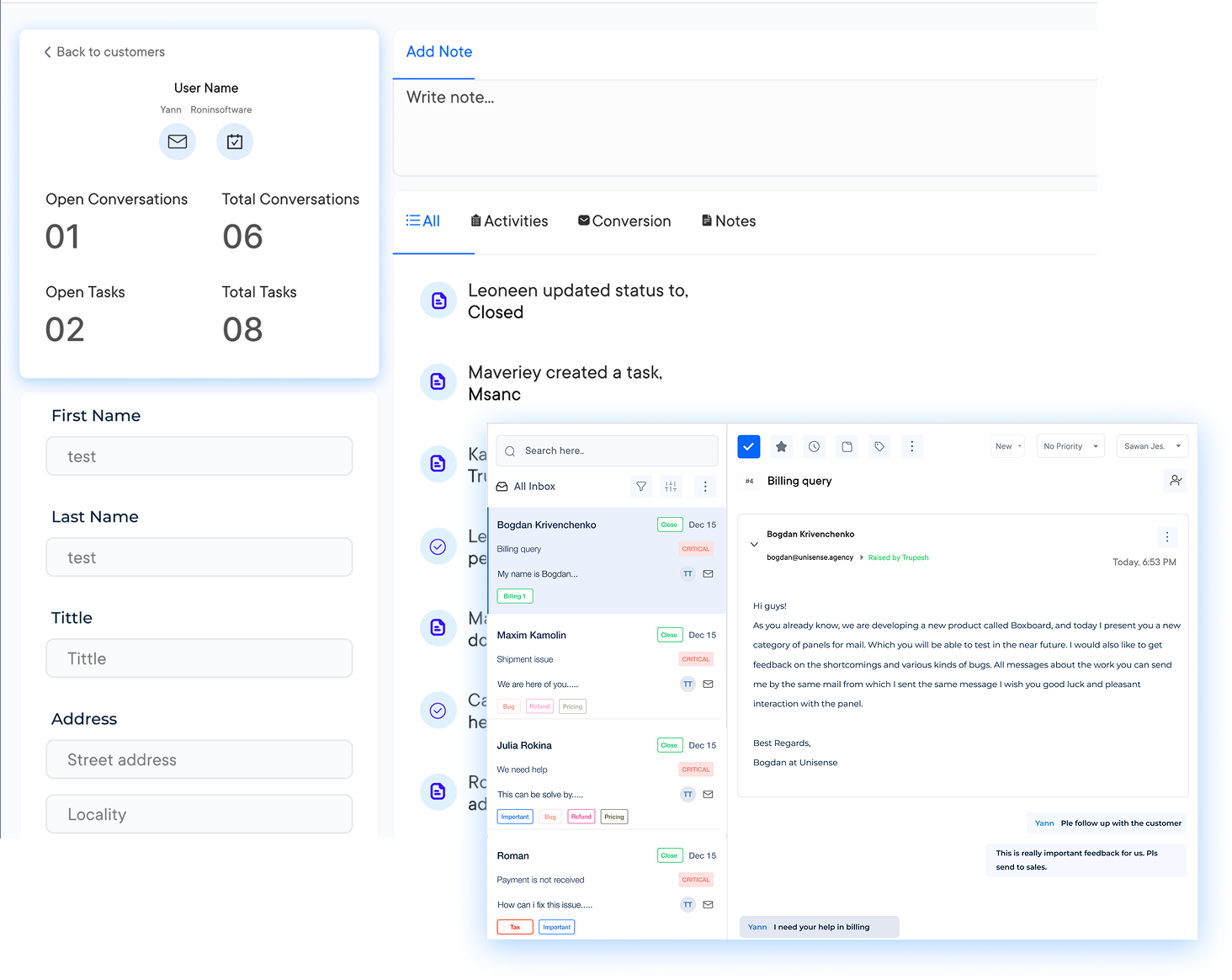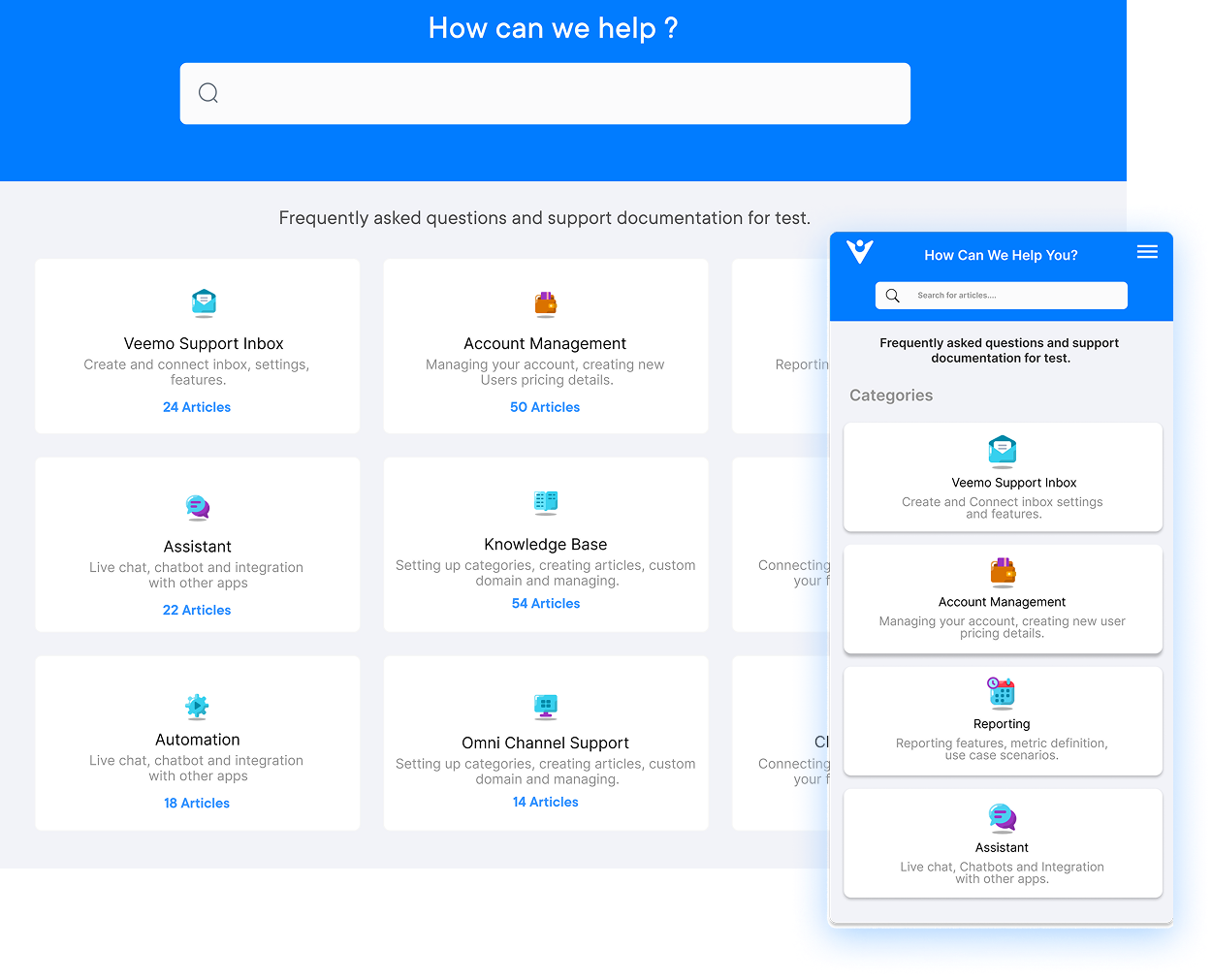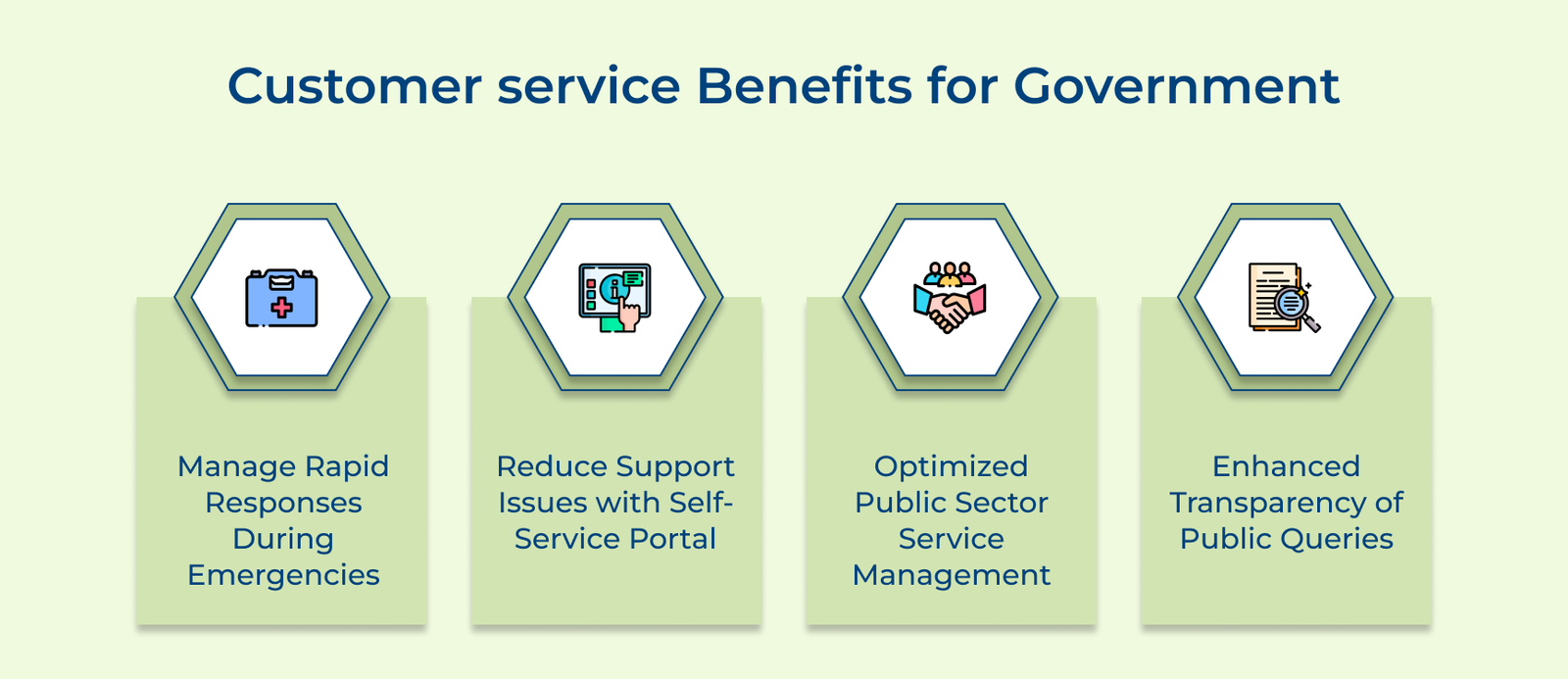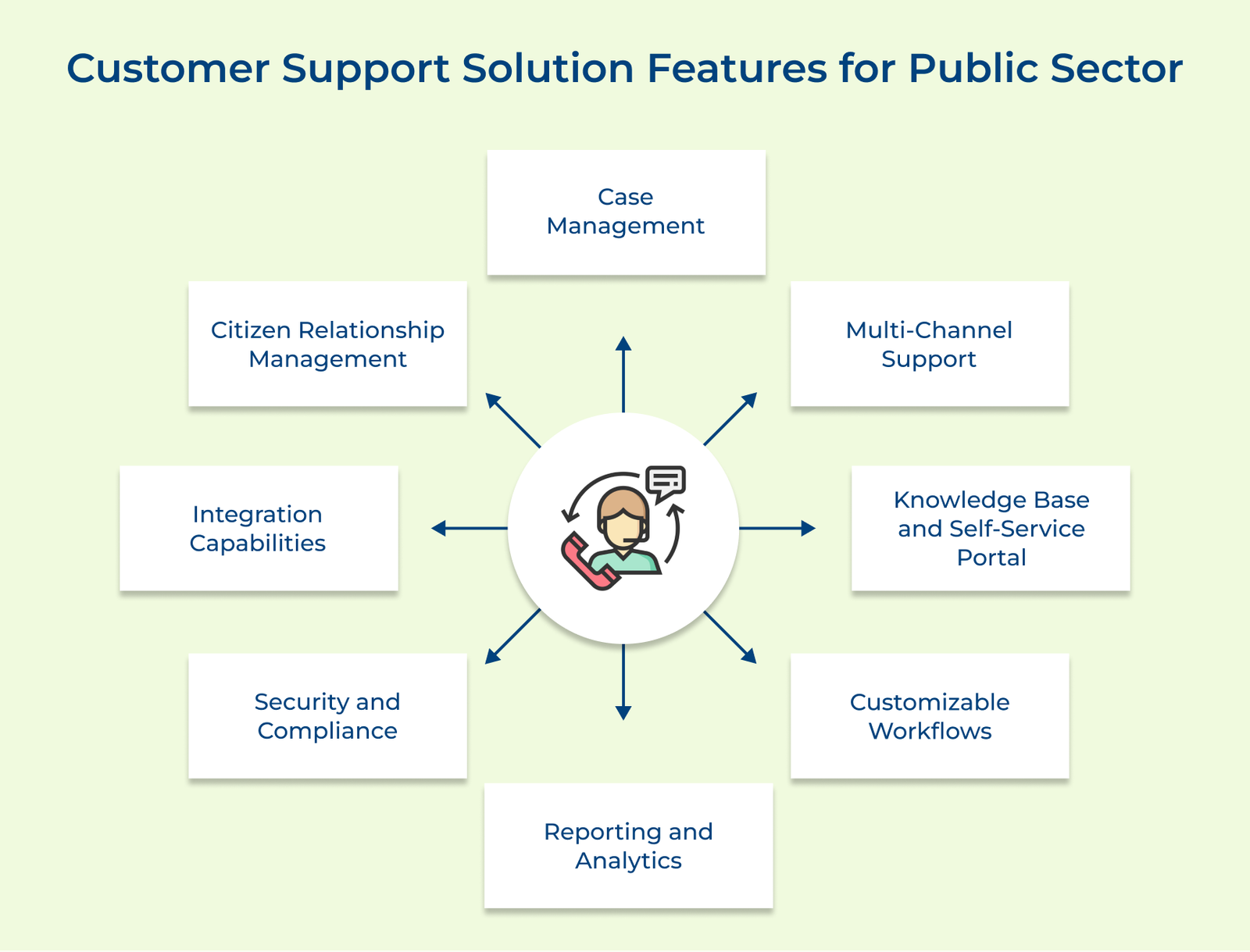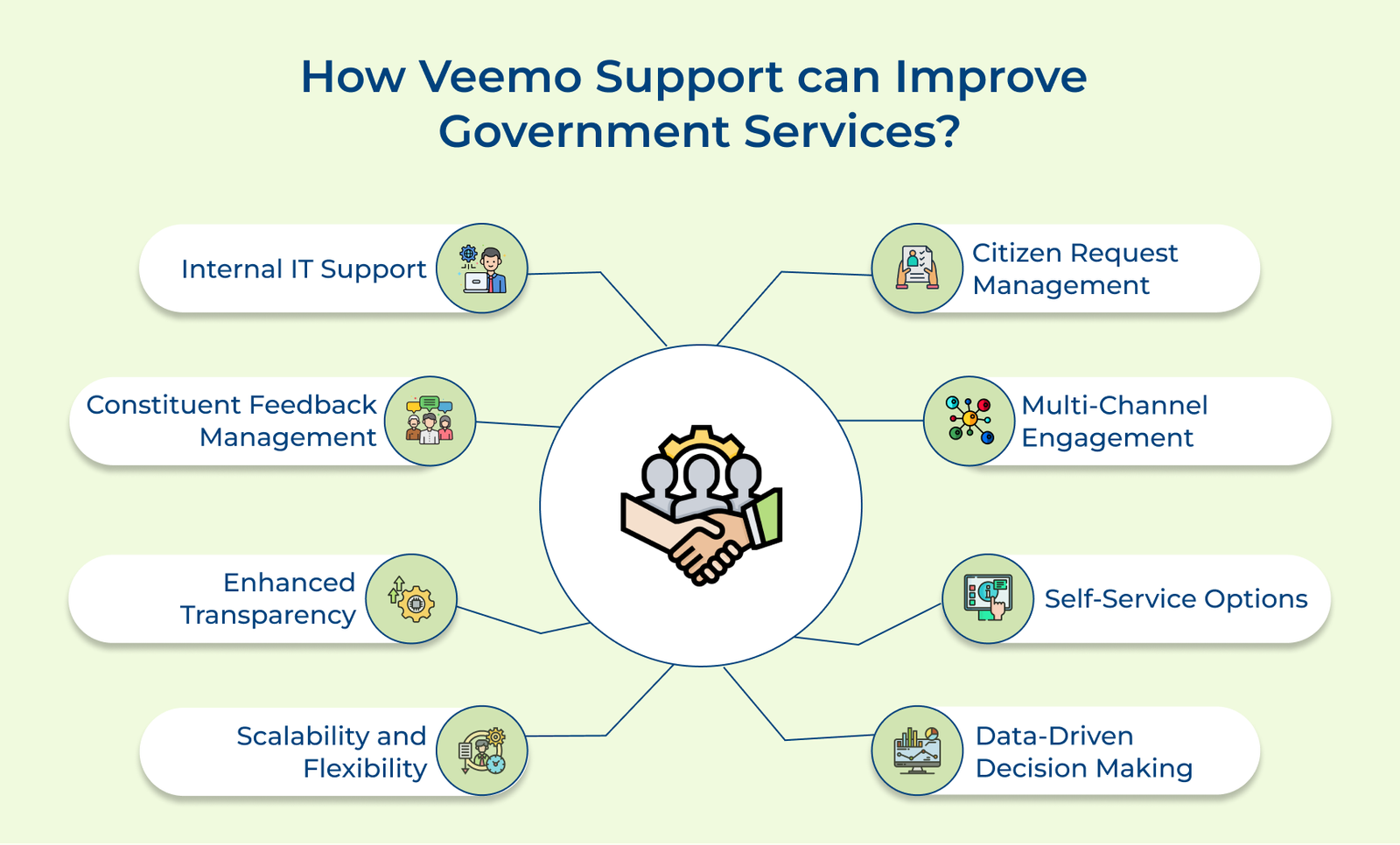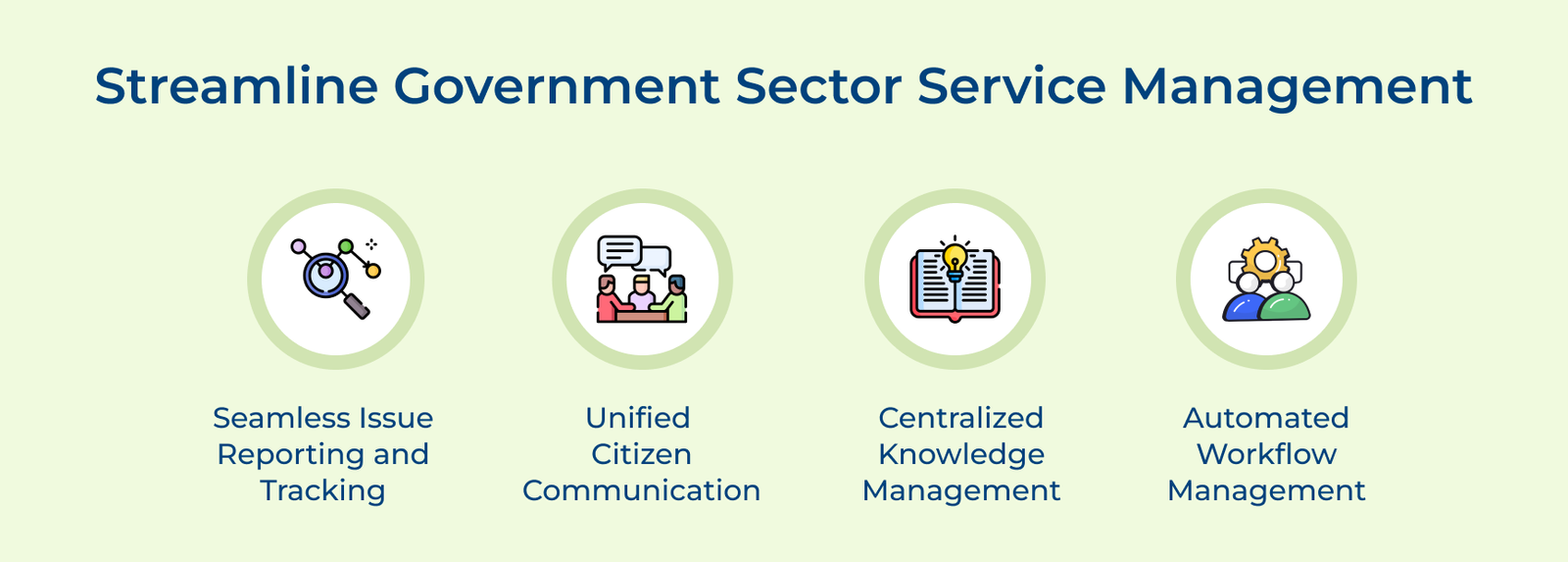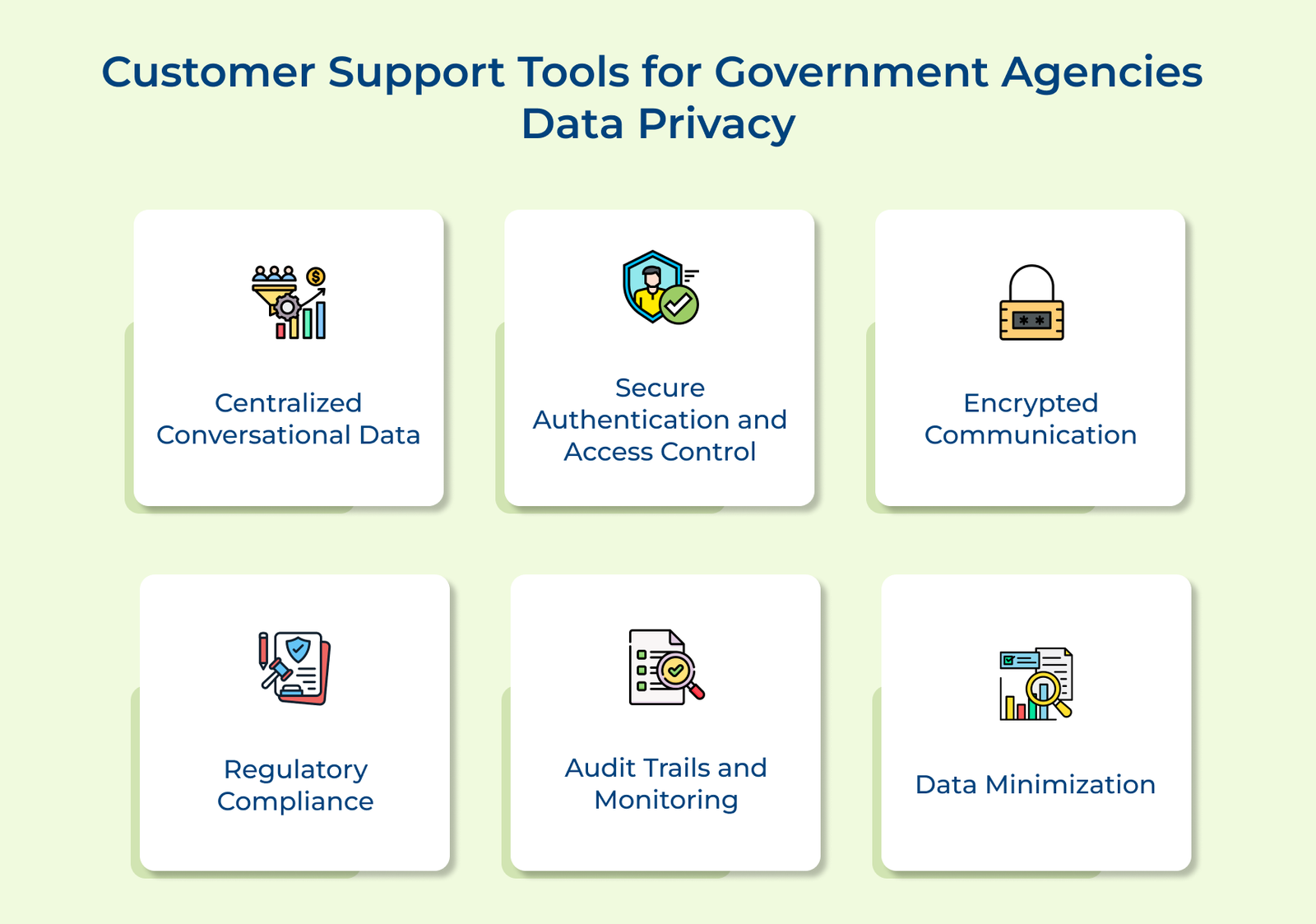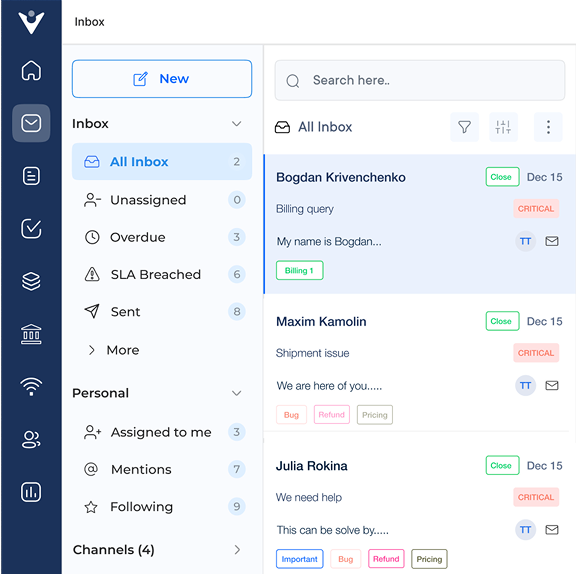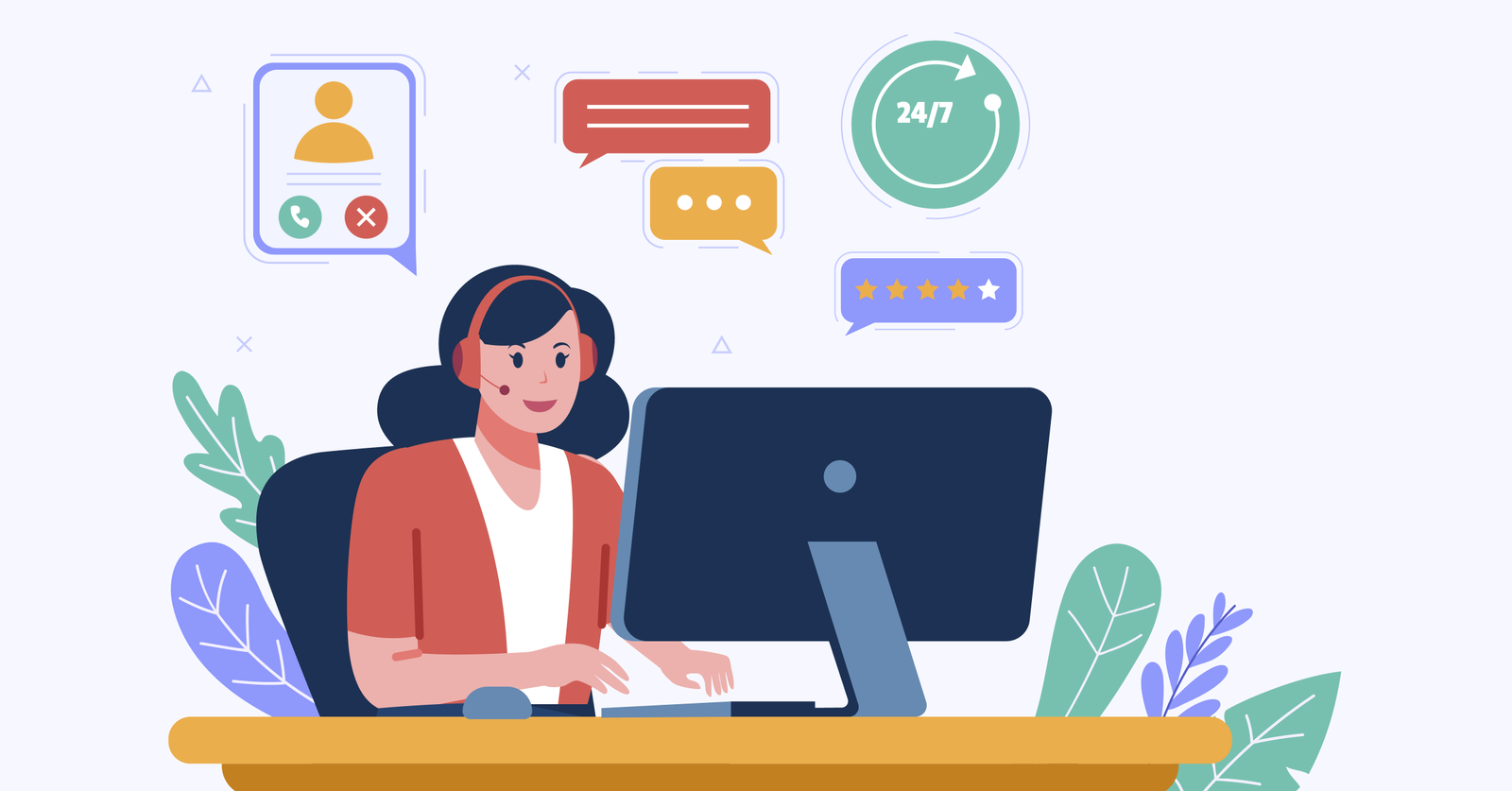1. Citizen Request Management
Veemo Support can streamline the handling of citizen requests and inquiries. It can automatically route requests to the appropriate department, track progress and keep citizens informed throughout the process.
The feature prevents information silos, reduces redundancy and enables more efficient problem-solving. It also provides better continuity of service, even if different government staff handle the case at different times.
2. Multi-channel Engagement
Modern citizens expect to interact with their government through various channels like phone, email, web portals and even mobile apps. A Customer service solution can integrate all these channels into a single system for government and public sectors to communicate efficiently.
Omnichannel approach ensures consistent service across all platforms so that citizens can choose their preferred method of communication. It also provides government staff with a complete view of all citizen interactions in a unified place, regardless of the channel used.
3. Self-service Options
Many Customer service systems for public sector organizations include knowledge base and self-service portals. Self-service portal allows citizens to find answers to common questions without needing to communicate directly with a government representative.
24/7 availability of information not only improves citizen satisfaction but also reduces the workload on government staff. They can focus on more complex Queries that require human intervention.
4. Data-driven Decision Making
Customer service systems for public sectors generate analytics about citizens’ interactions, common issues and resolution times. Governments can serve more citizens with fewer resources by automating routine tasks and reducing the need for in-person interactions.
The data and insights provided by customer support solutions can help identify areas where additional investment could lead to substantial improvements for the public sector.
5. Internal IT Support
Government agencies can use Veemo Support to manage their internal IT Help desk support operations. The process could involve handling software issues, hardware requests or network problems for government employees across different departments.
The ticketing system ensures that all IT issues are properly logged, prioritized and resolved promptly. It can also be used to coordinate response efforts during any natural disasters.
6. Constituent Feedback Management
Elected officials’ offices can use Veemo Support to manage consistent feedback and conduct regular polls after every ticket resolution to understand citizens’ concerns. Feedback can help categorize and route different types of feedback, ensuring that each concern is addressed by appropriate staff members.
7. Enhanced Transparency and Accountability
Modern Customer service systems for the public sector provide detailed tracking of all interactions and actions taken on a particular case. It creates a clear audit trail, which is crucial for government accountability.
Citizens can also track the status of their requests which leads to data transparency. Government managers can easily monitor staff performance, identify bottlenecks in processes to ensure that service level agreements (SLAs) are being met.
8. Scalability and Flexibility
Modern Customer service software, especially cloud-based ones offer scalability that can accommodate the changing needs for government agencies. Whether it’s handling a sudden influx of inquiries during a crisis or gradually expanding services, these systems can adapt to anything easily.
Workflows, forms, and processes can meet the specific needs of different government agencies to ensure that the system supports rather than just hindering existing procedures.
